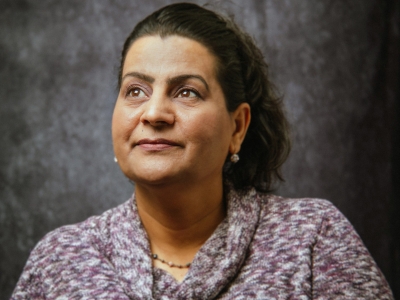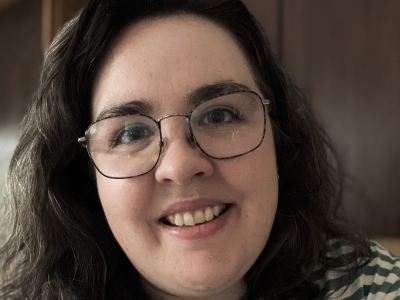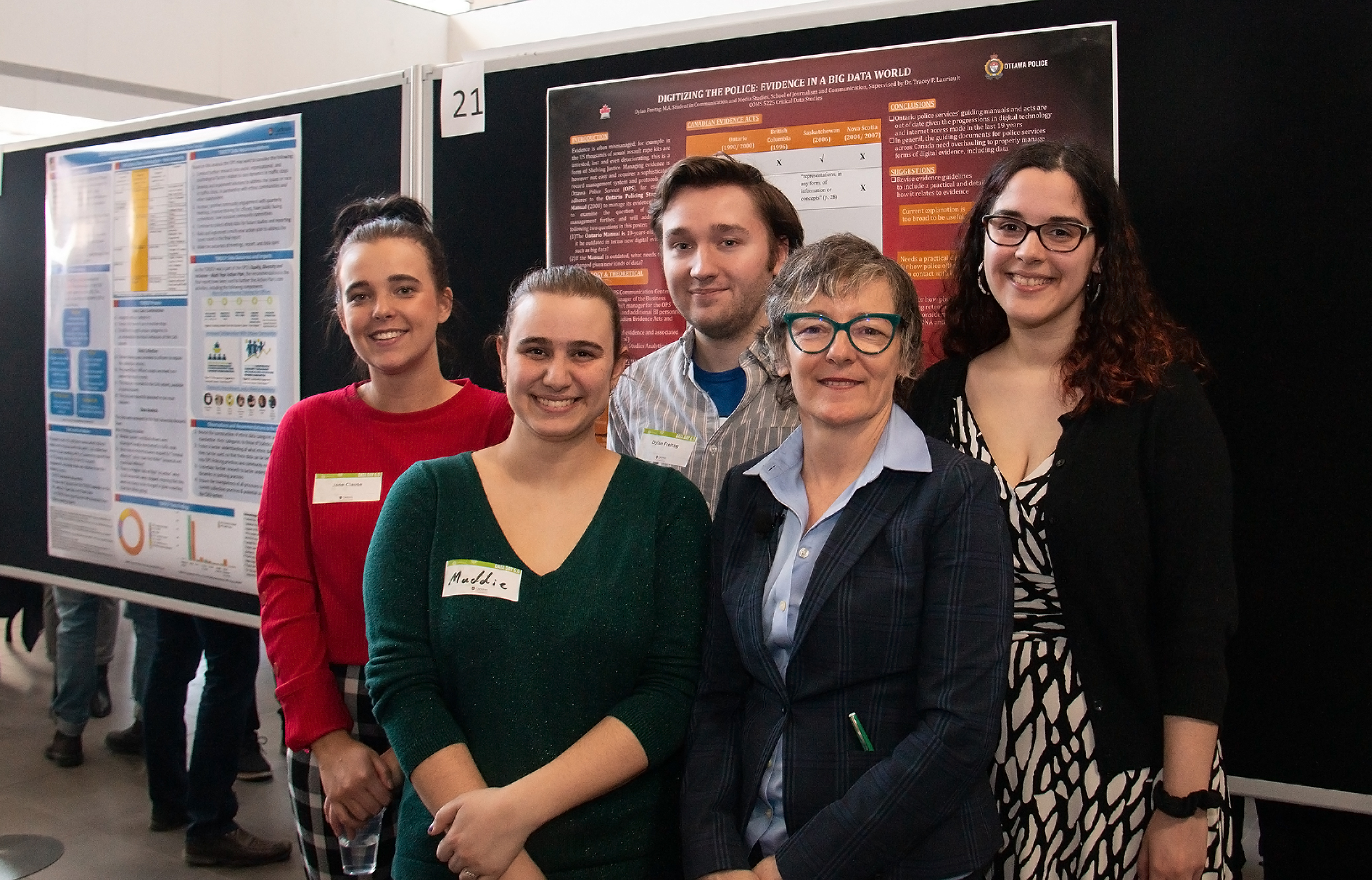
Tracey Lauriault (2nd from R) poses with her students at Data Day 6.0.
Professor Tracey Lauriault’s Communication and Media Studies students recently presented the findings of their research at Data Day 6.0, a day of panels and graduate student presentations on artificial intelligence and data.
In the case of Lauriault’s class, the presentations had a clear real-world application. They conducted interviews and studied the practices of the Ottawa Police Service (OPS) in areas such as body cameras, evidence storage, dispatch calls and racial profiling.
Their research posters attracted much attention at the event, which is traditionally dominated by engineering and science students.
“What was exciting was that the students were getting feedback from statisticians and community organizations like the Ottawa Police, who wish there was more critical data out there about public policy subjects,” explained Lauriault, who teaches the graduate-level Critical Data Studies class. “They didn’t know there were researchers doing this work.”
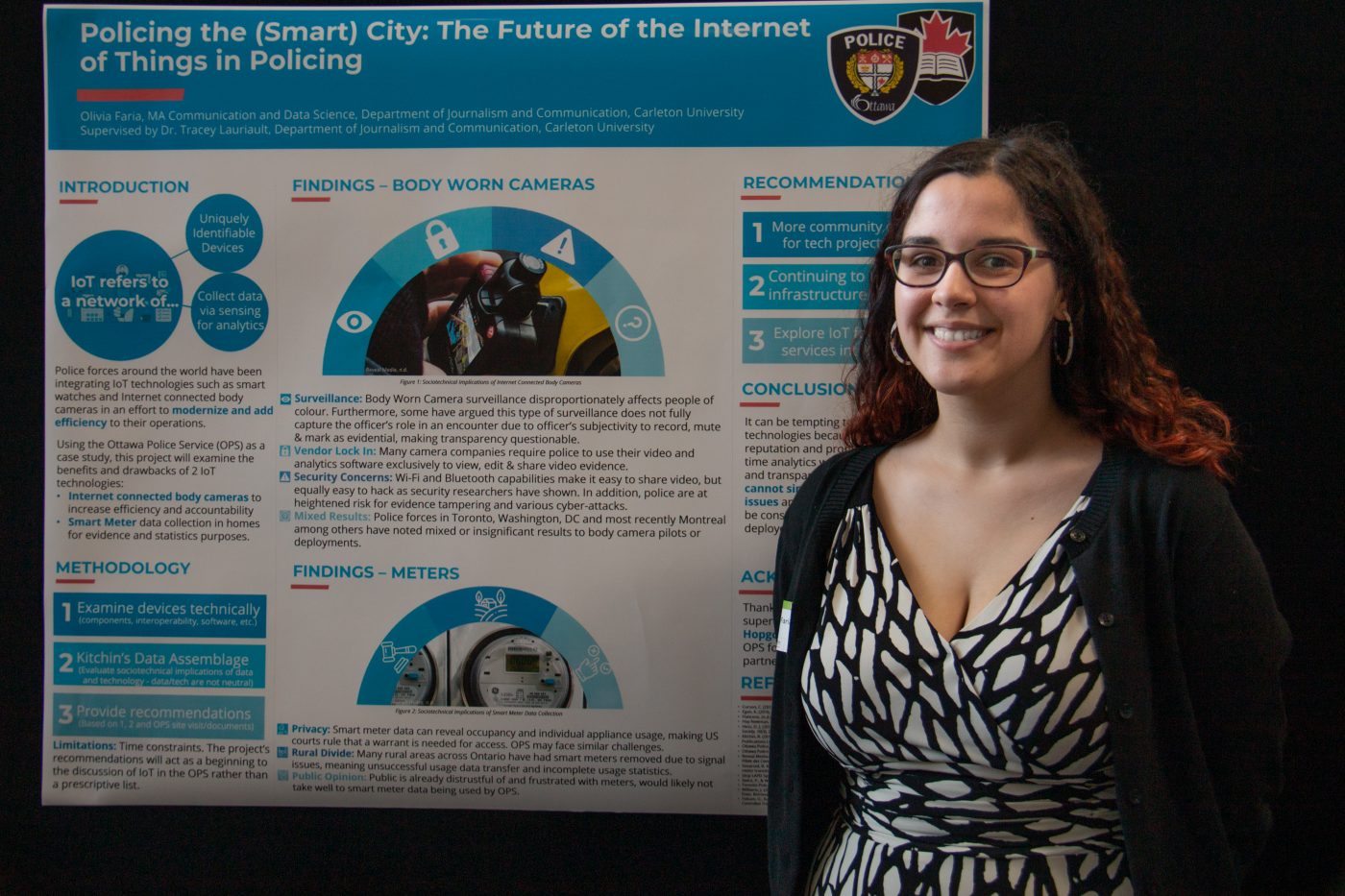
Olivia Faria
MA Communication student Olivia Faria presented her work on “Policing the (Smart) City: The Future of the Internet of Things in Policing”. Her focus was on the social and technical implications of interrelated technological devices such as internet-connected body cameras and smart meter data collection in homes.
“In the end, I concluded that the social implications outweigh the benefits,” said Faria, citing privacy and discrimination concerns, among others. “I hope this will help OPS think critically about what they are deploying.”

Dylan Freitag
Student Dylan Freitag was motivated to do his project after hearing about the thousands of untested rape kits found in a Detroit police department storage unit.
“This led me to ask how evidence works in general,” explained Freitag. “I asked the OPS about their processes, particularly with physical and digital evidence.”
Freitag’s findings, entitled “Digitizing the Police: Evidence in a Big Data World,” described how police services rely on out-of-date manuals that don’t consider modern digital evidence.
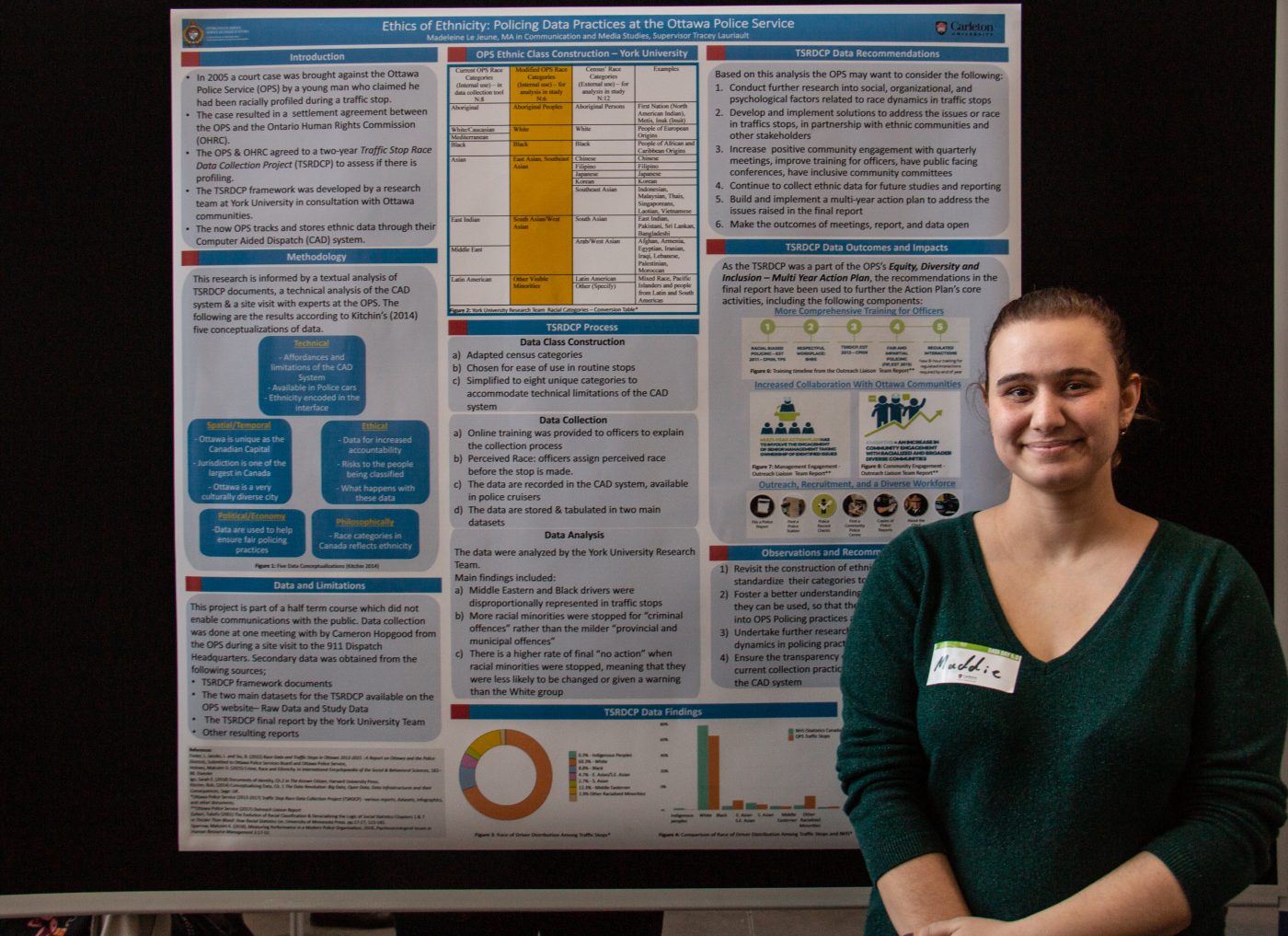
Madeleine Le Jeune
Madeleine Le Jeune considered the department’s use of the computer-aided dispatch (CAD) system to track and store ethnic data in her study, “Ethics of Ethnicity: Policing Data Practices at the Ottawa Police Service.”
“I’m making recommendations to the police service that include working with ethnic communities to develop and implement solutions to address these issues,” said Le Jeune, “and to make the outcomes of meetings, report, and data open.”
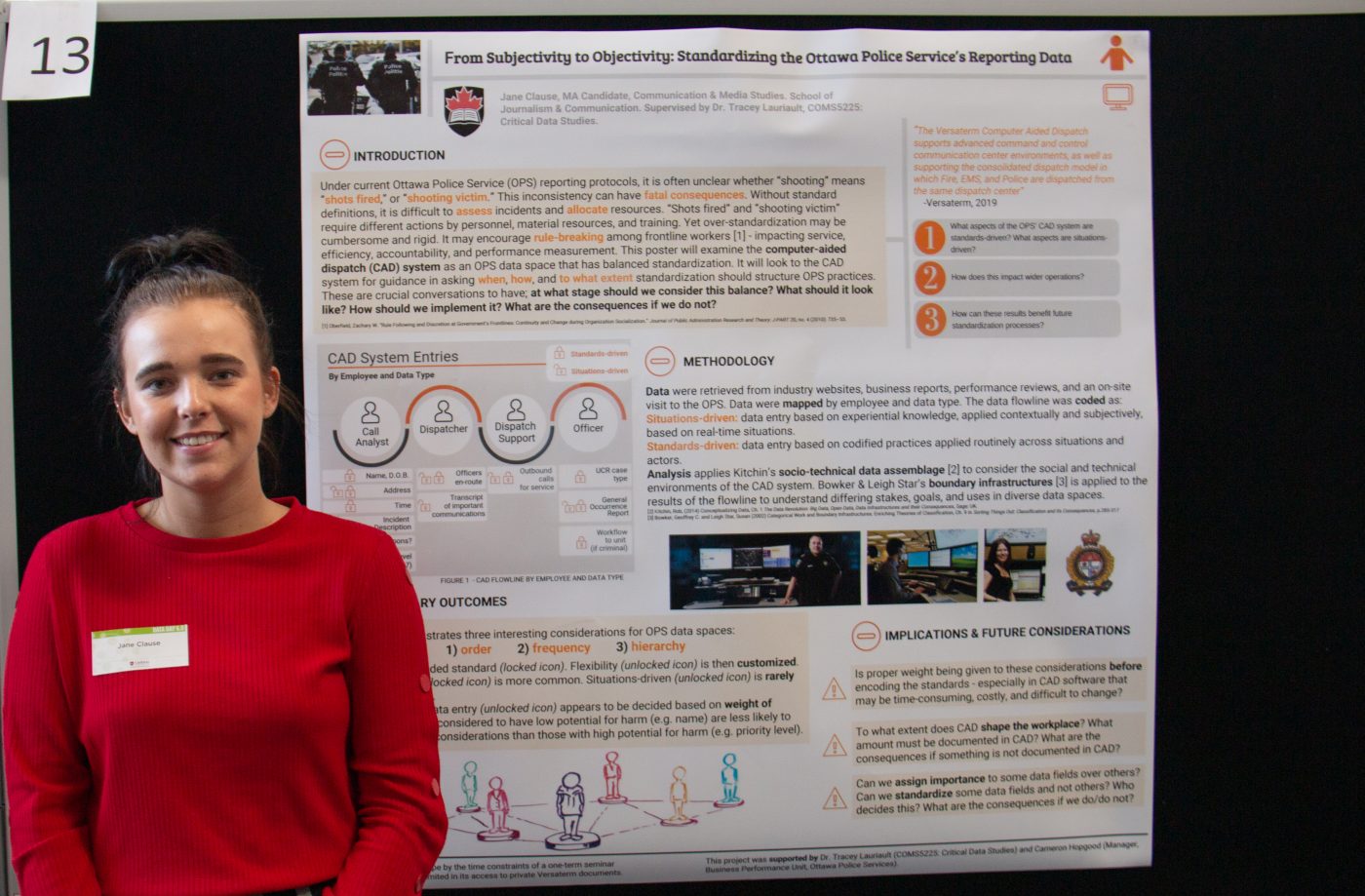
Jane Clause
For Jane Clause’s project, entitled “From Subjectivity to Objectivity: Standardizing the Ottawa Police Service’s Reporting Data,” she examined the computer-aided dispatch (CAD) system and how data was entered into it.
She recommended that OPS consider how much is documented in CAD, who decides, and the consequences when something is not included.
The poster session was followed by a panel discussion led by Professor Lauriault on the topic of “AI for Public Good”. Panellists included Sandra Robinson, Carleton’s School of Journalism and Communication; Wolfgang Alschner, University of Ottawa; Matthew Till, Employment and Social Development Canada; and Niraj Bhargava, The New Energy Group.
Wednesday, March 27, 2019 in Communication and Media Studies, General, News, Teaching
Share: Twitter, Facebook

